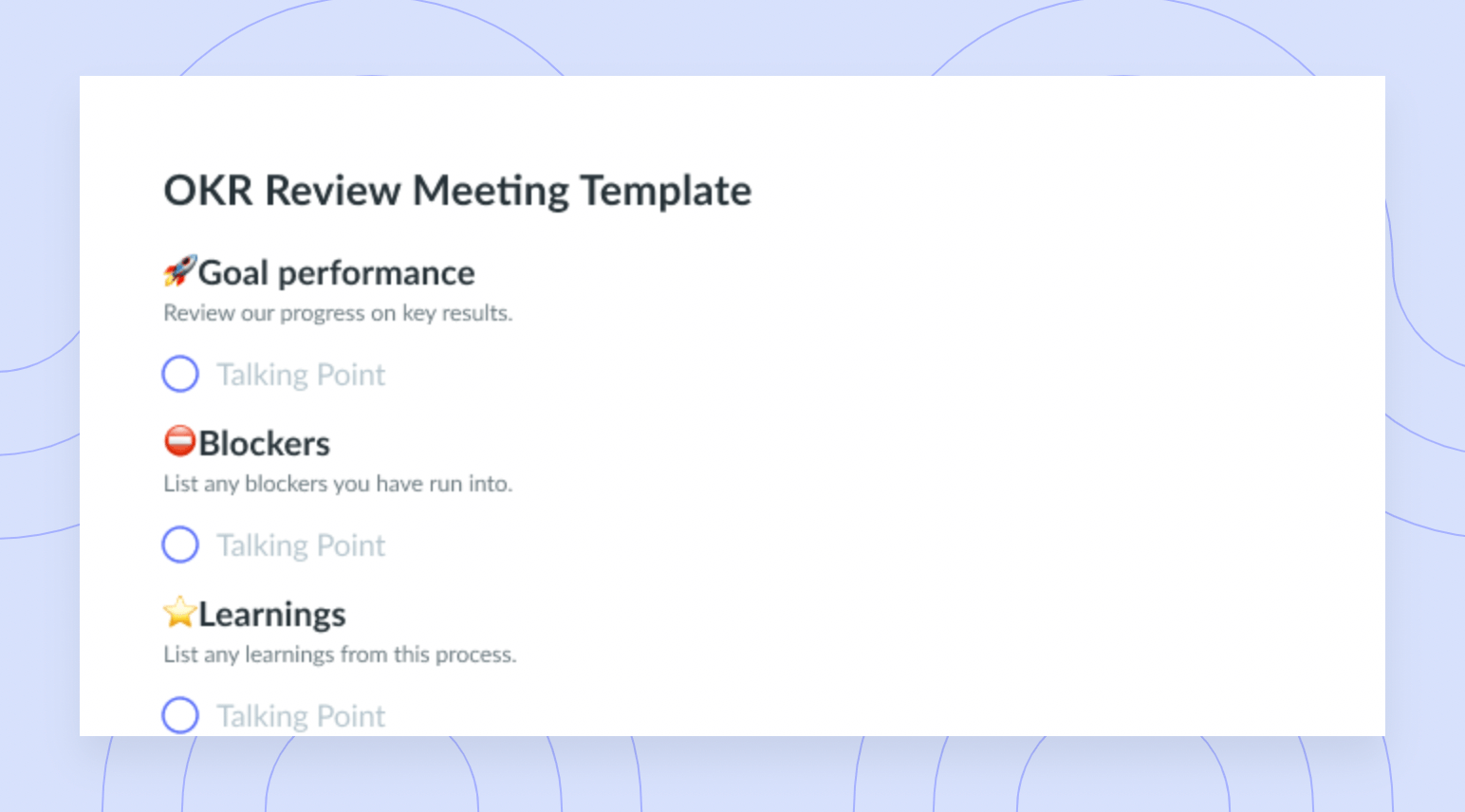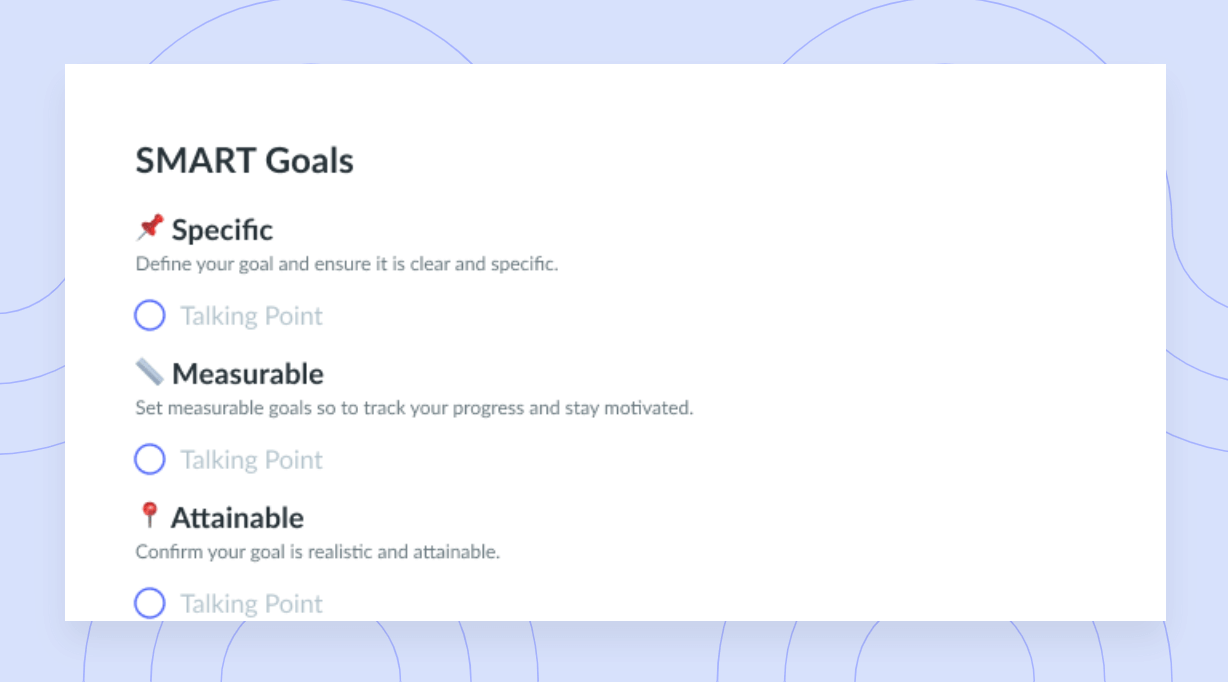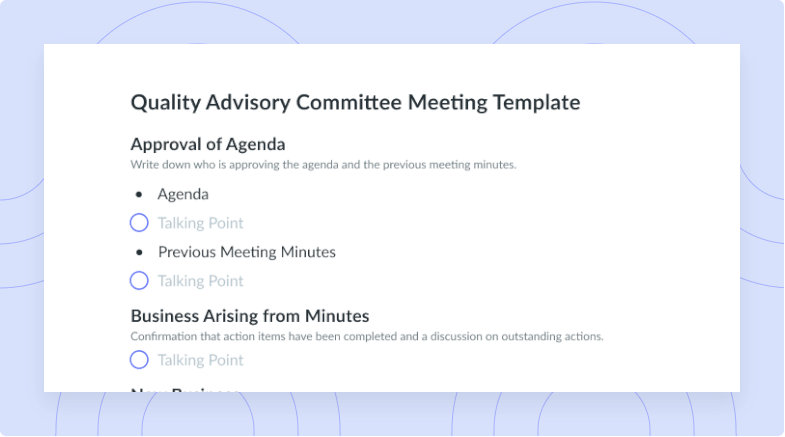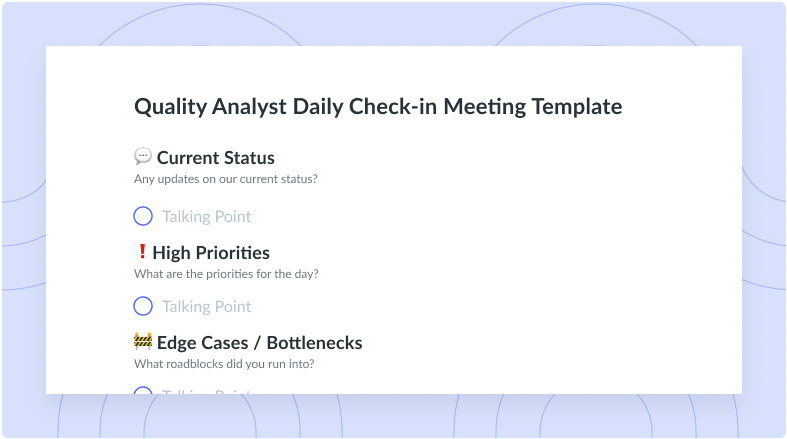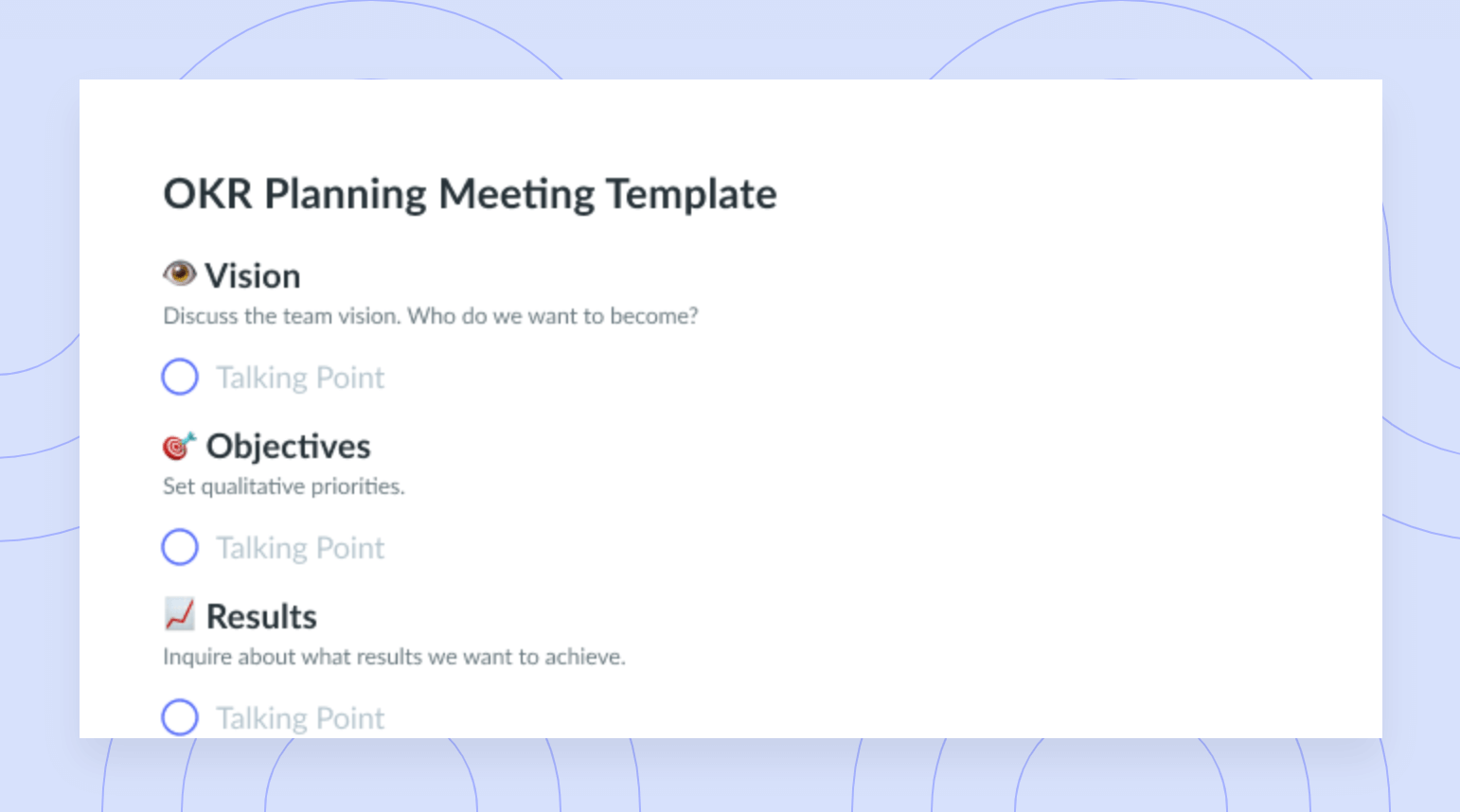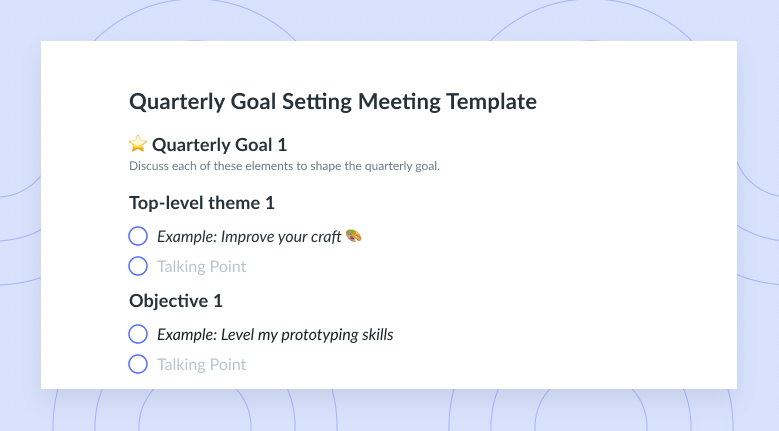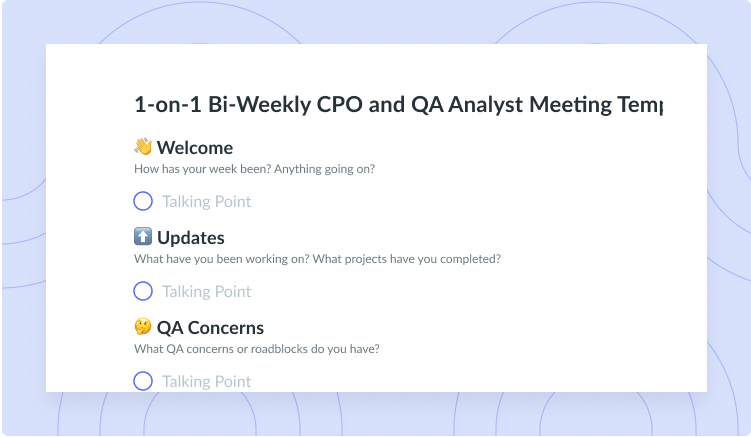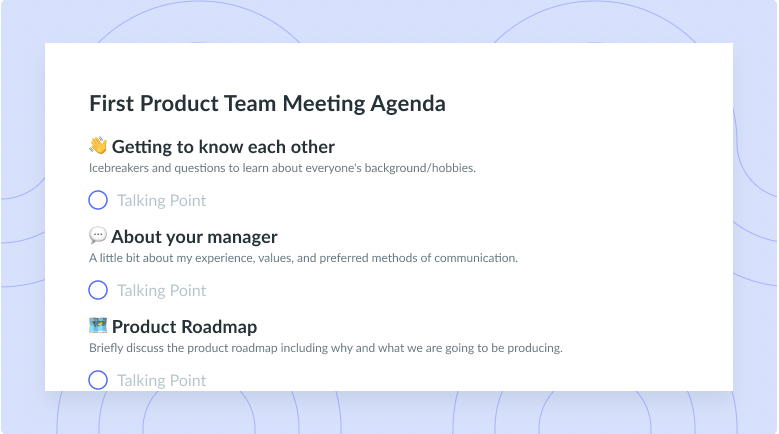Everything You Need to Know About Engineering OKRs [+ Examples]
Learn how engineering OKRs help boost product quality while increasing consumer satisfaction. Plus, get a free template!
Engineering revolves around creating something from nothing. The engineering team is normally responsible for shipping quality products that solve a need or speak to a pain point. Without meticulously planning and setting goals with measurable results, it can be nearly impossible to fulfill these team objectives.
In this article, we’ll dive into engineering objectives and key results (OKRs). We’ll cover the benefits of setting OKRs while diving into specific examples for niches like quality assurance, app development, localization footprints, security, and much more.
- What are engineering OKRs?
- The benefits of engineering OKRs
- Examples of engineering OKRs
- Free OKR meeting agenda template
What are engineering OKRs?
OKRs are a goal-setting framework used by individuals, engineering teams, and organizations to define measurable goals and track outcomes. To meet these measurable goals and track outcomes, your entire team needs to be on the same page. Engineering teams can use OKRs as a collaborative goal-setting tool to set challenging goals with measurable results.
The OKRs framework helps turn good ideas into well-executed projects, while helping you track progress, create alignment, and encourage engagement around measurable goals. Setting OKRs can be game-changing for companies. Not only do OKRs act as guidelines and benchmarks, but they also provide teammates with a North Star to keep them on track. If you use OKRs properly, you’ll create synergy, increase output, and improve communication for your team.

Stay on top of objectives
Stay on top of your team’s goals by clearly recording, defining, and tracking the progress of your OKRs in Fellow’s Objectives tool.

The benefits of engineering OKRs
1Align team members
OKRs are a great tool that can be used by individual engineers and engineering teams alike to create alignment and foster synergy. Leveraging OKRs will ensure the entire engineering team is working in tandem to achieve a common goal.
2Track project progress
Like anything, it can be difficult to track OKRs’ success if you don’t take the time to properly track everyone’s progress. Fellow’s Objectives tool makes it possible for you to stay on top of your team’s goals by clearly recording, defining, and tracking the progress of your OKRs. At-risk objectives can easily go unnoticed if you don’t take the time to review them weekly.
With the Objectives tab in Fellow, you can link your objectives to your weekly OKR meeting; doing so will make it easy for you to review progress, resolve challenges, and make sure all OKRs are on track. Setting OKRs in Fellow is a great way for engineering teams to track progress and foster accountability.
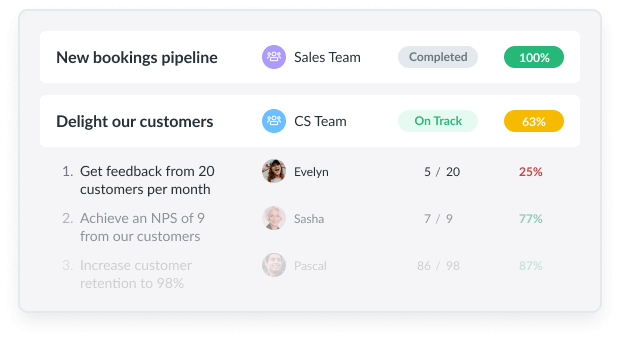
3Overcome blockers
To make sure everyone is working efficiently, it’s important to conduct frequent check-ins. If you don’t conduct weekly check-ins where your engineering team has the opportunity to pose questions or weigh in on OKRs, you won’t be able to identify potential roadblocks. If someone on your team is feeling stuck, they won’t be able to be productive or work to the best of their abilities. Identifying any existing or potential roadblocks can be the difference between shipping a successful product or ending up with a failure.
Examples of engineering OKRs
- Usability OKRs
- Quality assurance OKRs
- Application development OKRs
- Data security OKRs
- Reliability and security OKRs
- Localization footprint OKRs
- Engineering software OKRs
- User experience OKRs
1Usability OKRs
Users’ needs continue to evolve and change as preferences ebb and flow with trends and external factors, so it’s important to constantly make iterations. Setting OKRs around usability helps engineering teams grow and manage demand while the team yields and tracks results. The key to continuous growth is moving forward with an action plan and not remaining stagnant.
2Quality assurance OKRs
Quality assurance (QA) is a way of preventing mistakes or roadblocks when it comes to shipping a product. When quality assurance is taken seriously and done well, it will reduce the number of mistakes or defects that may be found upon the release of a product. OKRs can be used during QA to decrease bugs and limit roadblocks. Ultimately, quality assurance OKRs should be used to increase the efficiency with which a product is shipped while simultaneously limiting the number of defects or roadblocks that are ultimately found by the end user.
3Application development OKRs
Developing an app is extremely tedious and requires a great deal of planning. As a result, you’ll want to make sure you set up proper app development OKRs from the get-go. Objectives may vary but should ultimately be structured around the quality of the product or the timeline in which the product must be completed. You may consider setting an OKR that aims to increase the unit test coverage and story point delivery in an attempt to decrease the time between ideation and fruition. Taking engineering OKRs into consideration during this phase of development will ensure your engineering team is able to meet deliverables and stay on track.
4Data security OKRs
To ensure your engineering team’s security isn’t breached or ultimately attacked, it’s extremely important to cover your bases and make sure your collective team understands what’s at stake. Setting OKRs will help your team improve your data security and recovery rate by safeguarding against security breaches and reducing the time it takes to address and mitigate risks. Increasing the data recovery rate by following predetermined engineering OKRs will help keep your product safe.
5Reliability and security OKRs
Reliability and security go hand in hand. The first step is zeroing in on reliability. After you’ve established a reliable product, you can get to work on making sure it’s secure. Engineering OKRs that revolve around improving response time, decreasing production exceptions, and minimizing errors will help to ensure satisfaction.
6Localization footprint OKRs
If you hope to reach users at a more niche or individualized level, you need to create engineering OKRs that consider your localization footprint. Prioritizing localization OKRs will help you get your product in front of users in your intended geographical area. To meet these measurable objectives, you’ll need to increase the support of new languages and ensure localization features are properly maintained.
7Engineering software OKRs
The key to a functional product is stellar software. Without seamless software that has been developed with intent, you won’t be able to ship a product that solves a need or caters to a pain point. The more bugs and breaks there are, the more headaches there will be down the road. By creating engineering OKRs that are built around shipping comprehensive software, you’ll ensure users have a positive user experience.
8User experience OKRs
A well-executed user interface (UI) facilitates effective interactions between the user and product. In turn, a positive UI experience helps generate loyalty and augment retention. A combination of a clean design, responsiveness, and functional features all aid in creating a more positive user experience. When generating engineering OKRs with the intent of improving UI, take the intended user into consideration so the product can be developed in a way that minimizes their specific pain points.
Free OKR meeting agenda template
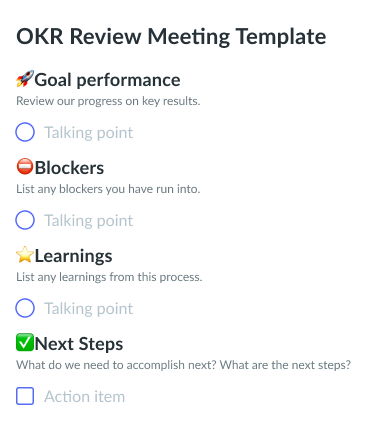
Are you ready to start implementing engineering OKRs?
Engineering OKRs can be leveraged for a variety of reasons. Not only do they aid in creating synergy and alignment, but they also allow engineering managers to track progress and make adjustments accordingly. When setting OKRs, be mindful and set goals that are obtainable for your team. Although failing to set proper OKRs may be discouraging and may ultimately not yield favorable results, setting the right OKRs will increase performance amongst engineers while fostering growth.
![Product Management OKRs 101 [+ Examples]](https://fellow.app/wp-content/uploads/2022/05/Product-Management-OKR.jpg)
![Everything You Need to Know About Sales OKRs [+ Examples]](https://fellow.app/wp-content/uploads/2022/05/sales-okrs.jpg)
![Everything You Need to Know About Customer Success OKRs [+ Examples]](https://fellow.app/wp-content/uploads/2022/06/cs-okrs.jpg)




![Strategy vs. Tactic—Everything You Need to Know [+ Examples]](https://fellow.app/wp-content/uploads/2022/06/Strategy-vs.-Tactics.jpg)

